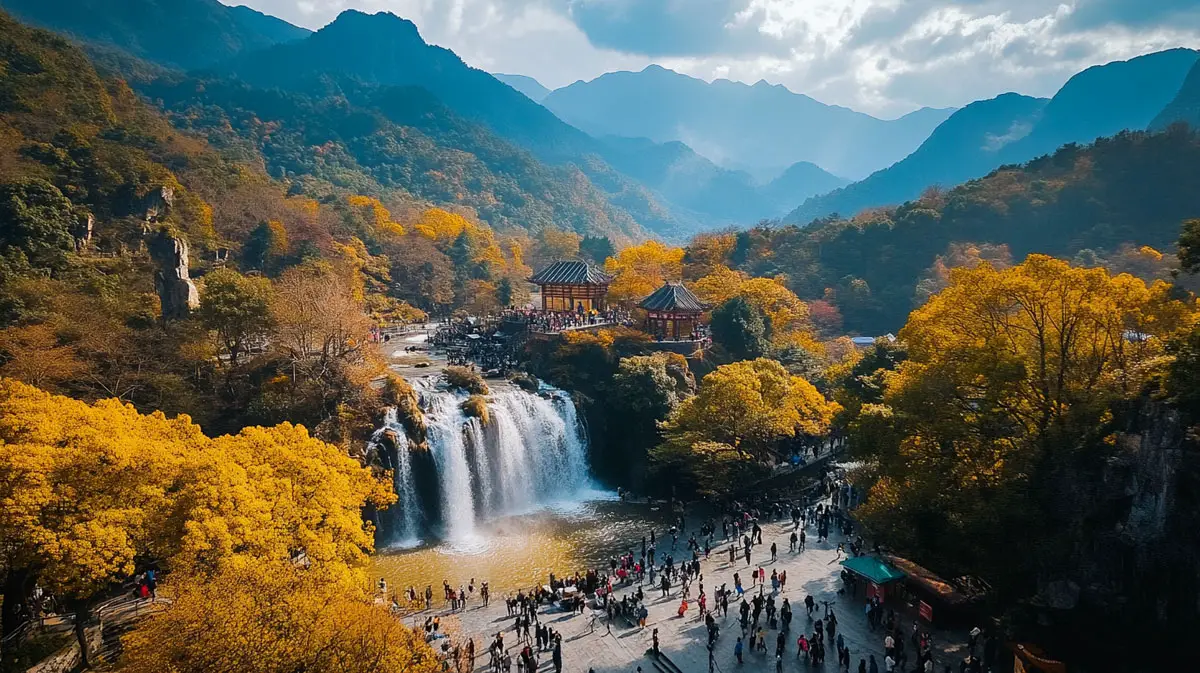Top 3 Must-Visit Cities in China for 2025

The tourism market is blossoming like flowers and flowing deeply like still waters. China’s natural and cultural landscapes are becoming beautiful places that both residents and tourists enjoy, from major cities to medium-sized and small cities and county centre towns. For the top places to visit in China in 2025, Beijing, Guizhou, and Gansu must be on the list. These three places have their distinct styles, and visitors can choose according to their personal tastes. If you’re looking for a hassle-free experience, find some comprehensive China tours.
What to Explore for Beijing Tours
Top Thing to Do: City Walk along the Central Axis
For those who love culture and trends, this year has seen the City Walk truly take off. The Central Axis, which is 7.8 kilometers long, stretches from the southern end at Yongding Gate to the northern end at the Bell and Drum Towers. Within the cultural heritage protection area of the Central Axis, there are not only magnificent ancient buildings but also numerous ancient trees and famous woods with diverse postures, all of which have witnessed the history of Beijing. If you are planning a City Walk during Beijing tours, the Central Axis is definitely a must-see route.
Recommended Beijing Attractions
The Palace Museum
Founded on October 10, 1925, the Palace Museum is a large-scale integrated ancient art museum built on the basis of the collections and ancient architectures of the Ming and Qing imperial palaces. Numerous rare and precious cultural relics are preserved and displayed, making it a representation of the essence of ancient Chinese architecture, culture, and art.
Mutianyu Great Wall
73 kilometres from Beijing’s urban area, in Huairou District, the Mutianyu Great Wall is known as “the unique beauty of the Great Wall.” The 5,400-meter-long Mutianyu section of the Great Wall is one of China’s longest and one of Beijing’s sixteen most famous scenic locations.
What to Explore in Guizhou Tours
Top Thing to Do: Summer Retreat and Homestay
Guizhou is working towards the goal of being recognized as a world-class tourism destination. Its capital, Guiyang, is known for its cool summer, and thus has been referred to as the “City of Forests” and “Summer Retreat Capital.”
Recommended Guizhou Attractions
Huangguoshu Waterfall
Huangguoshu Waterfall is the largest waterfall in the nine waterfall clusters of the Baishui River, which is a tributary of the Dabang River in the Pearl River system. In early autumn, this scenic area enters its best viewing season of the year. The large waterfalls rush with great momentum and plenty of visitors to see them.
Fanjin Mountain
It is one of the earliest places in southern China to rise from the ocean to land. This Buddhist sacred mountain in Tongren, Guizhou, carries thousands of years of history and culture and exudes a captivating charm. To this day, the mountain top still preserves geological wonders from 1.4 billion years ago.
What to Explore in Gansu Tours
Top Thing to Do: Self-driving
Gansu is the golden stretch of the Silk Road, spanning three thousand kilometres and a haven for self-driving tours in the open air. It stretches more than 1,600 kilometres from east to west and is situated where the Loess Plateau, Tibetan Plateau, and Inner Mongolia Plateau meet. The Gansu-Qinghai Grand Loop and the Northwest Grand Loop are two distinctive self-driving routes in Gansu that continue to draw large numbers of self-driving visitors.
Recommended Gansu Attractions
Mogao Caves
The Mogao Caves, a must-see attraction during Gansu tours, were excavated from the Sixteen Kingdoms period to the Yuan Dynasty. The artistic palace of the Mogao Caves is a compilation of ancient architecture, ancient sculpture, and old murals, recognized around the world for the richness and color in their murals. The capacity and content of the Dunhuang murals simply cannot be matched by any other religious grottoes, temples, and palaces around the world today.
Zhangye Danxia Geological and Cultural Park
Mainly consisting of red conglomerate, sandstone, and mudstone, Zhangye Danxia in the Qilian Mountains shows distinct signs of arid and semi-arid climates. It has the most typical Danxia landform in the dry northern region of China, and it is the only area in the whole country where Danxia landform, earth forest landform, and colorful hills are highly integrated.










